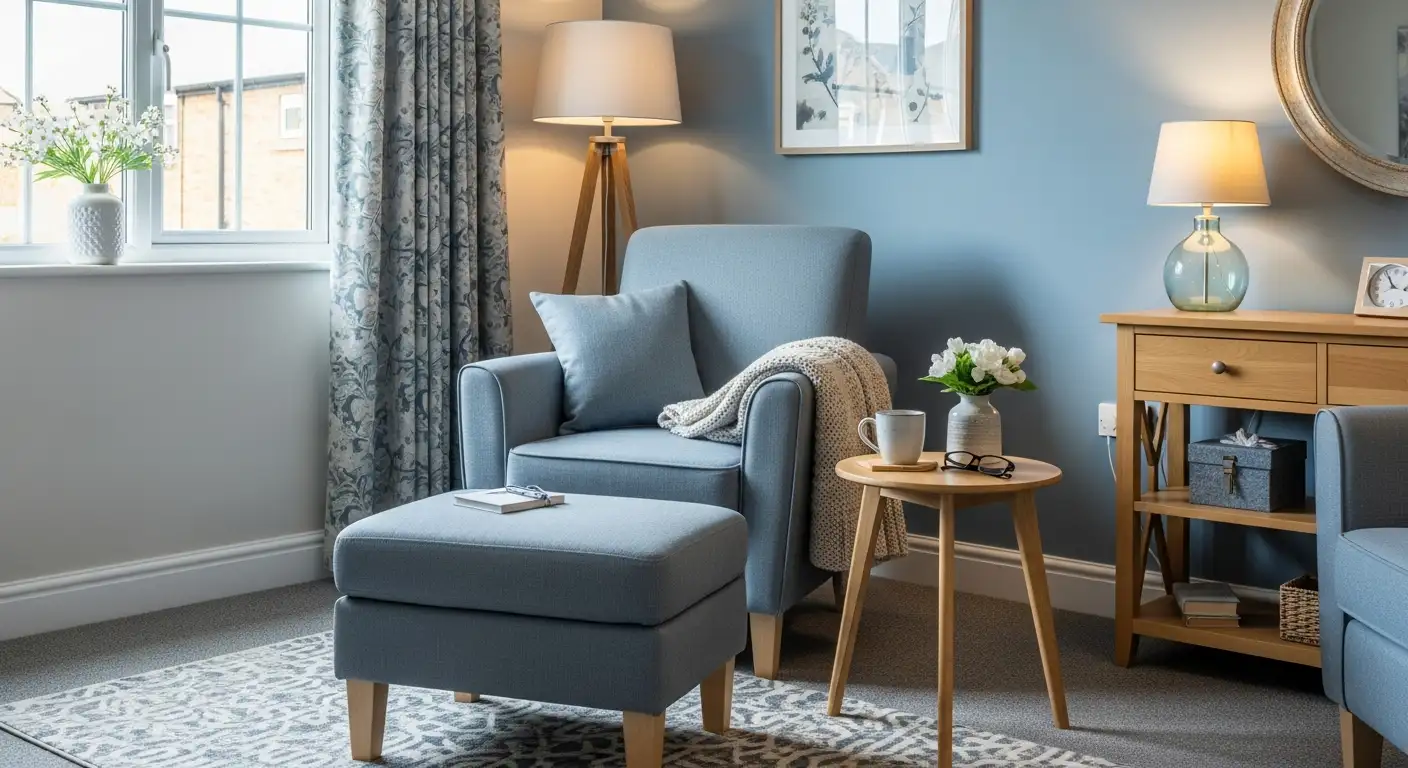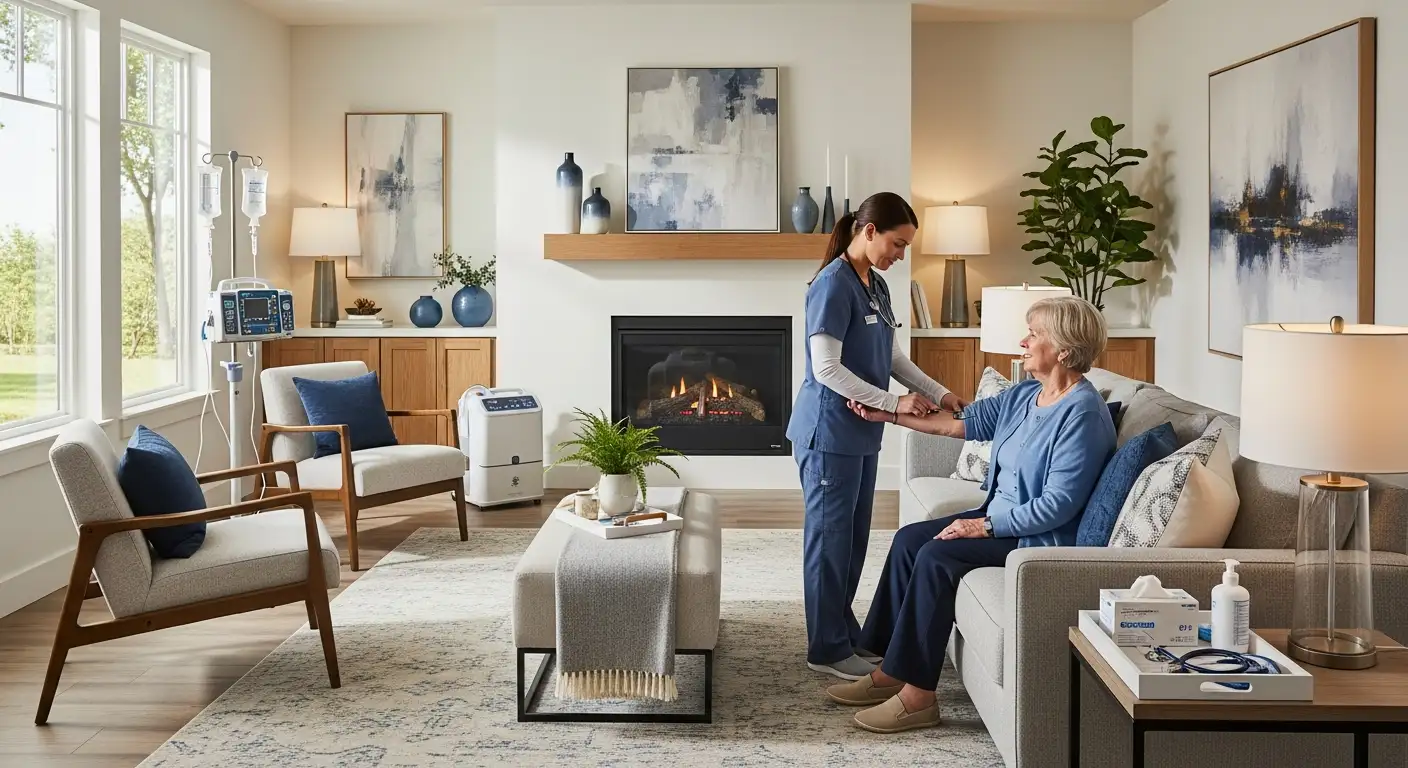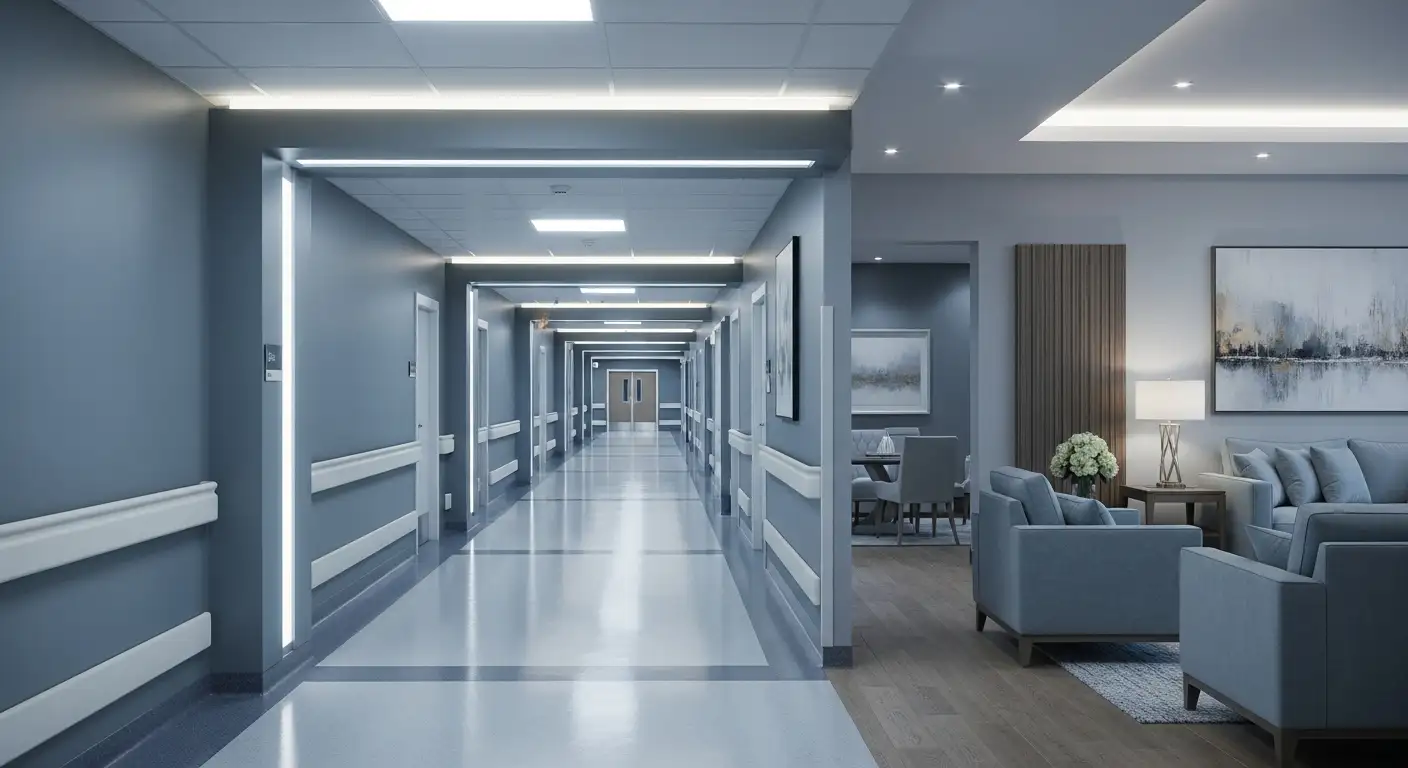Understanding Sleep Changes
As individuals age, they often experience changes in their sleep patterns and quality. Understanding these changes is essential for addressing sleep issues in seniors and improving their overall well-being. Two key factors that contribute to the sleep changes in older adults are circadian rhythm disruption and the impact of health conditions.

Circadian Rhythm Disruption
The body's internal clock, known as the circadian rhythm, plays a significant role in regulating sleep-wake cycles. However, as people age, the function of the suprachiasmatic nucleus (SCN) in the hypothalamus, which controls the circadian rhythm, can deteriorate. This can disrupt the natural sleep-wake patterns and directly influence when individuals feel tired or alert.
Insufficient exposure to daylight is another factor that can impact circadian rhythms in older adults. Many older individuals have limited exposure to natural light, averaging around one hour per day. This lack of daylight can further disrupt their circadian rhythms, particularly for those residing in nursing homes or individuals with conditions such as Alzheimer's disease.
Impact of Health Conditions
Various health conditions can have a significant impact on sleep quality in older adults. Conditions such as depression, anxiety, heart disease, diabetes, and pain-related conditions like arthritis can interfere with sleep quality. It is worth noting that individuals with multiple health conditions are more likely to report poor sleep quality and experience symptoms of sleep disorders.
Moreover, lifestyle changes associated with aging, such as retirement, loss of independence, and social isolation, can contribute to poor sleep quality in older adults. These changes can lead to less structured sleep-wake schedules, increased stress, and anxiety, all of which can have a negative impact on sleep.
Understanding the factors that contribute to sleep changes in seniors is crucial for developing effective strategies to enhance sleep quality and promote overall well-being. By addressing circadian rhythm disruption and considering the impact of health conditions, it becomes possible to develop tailored interventions and support systems to improve sleep in older adults.
Factors Affecting Sleep Quality
Sleep quality in seniors can be influenced by various factors, including lifestyle changes, medications, medical conditions, and sleep hygiene practices. Understanding these factors is key to addressing and improving sleep difficulties in older adults.
Lifestyle Changes
As individuals age, they often experience lifestyle changes that can impact their sleep quality. Retirement, loss of independence, and social isolation are common factors associated with aging that can contribute to poor sleep quality in older adults. These changes can lead to less structured sleep-wake schedules, increased stress, and anxiety, all of which can negatively affect sleep.
Furthermore, lack of physical activity and social isolation can disrupt the normal sleep-wake cycle and rhythm, making it harder to fall asleep and stay asleep. It is important for seniors to engage in regular physical activity and maintain social connections to promote better sleep.
Medications and Medical Conditions
Seniors often have multiple health conditions, such as depression, anxiety, heart disease, diabetes, and pain-related conditions like arthritis, which can interfere with sleep quality. Individuals with multiple health conditions are more likely to report poor sleep quality and experience symptoms of sleep disorders. Medical conditions and the medications used to manage them can disrupt sleep patterns and lead to daytime sleepiness and nighttime sleep difficulties.
Pain syndromes, arthritis, digestive diseases, heart disease, lung disease, renal and urologic diseases, and cancer are among the medical conditions that can contribute to sleep disturbance in older adults. Additionally, psychiatric illnesses such as anxiety and depression can significantly increase the risk of insomnia in older adults.
Sleep Hygiene Practices
Maintaining good sleep hygiene practices is important for seniors to improve sleep quality. Sleep hygiene refers to the habits and practices that promote healthy sleep. It includes going to bed and waking up at consistent times, creating a comfortable sleep environment, and avoiding stimulants close to bedtime.
Factors such as alcohol, caffeine, and nicotine can negatively impact sleep in older individuals, making it difficult to fall and stay asleep. Seniors should limit the consumption of these substances, especially close to bedtime.
Creating a relaxing bedtime routine and ensuring a comfortable sleep environment, including a cool and dark room, can also contribute to better sleep quality. Maintaining a consistent sleep schedule and practicing relaxation techniques, such as deep breathing or meditation, can help seniors prepare for restful sleep.
By addressing lifestyle changes, managing medications and medical conditions, and implementing good sleep hygiene practices, seniors can enhance their sleep quality and overall well-being. It may be helpful for older adults to consult with healthcare professionals or sleep specialists for personalized guidance and support in improving their sleep.
Recommendations for Seniors
To enhance sleep quality in seniors, it is important to consider various lifestyle factors and practices. The following recommendations can help promote better sleep for older adults:
Exercise and Physical Activity
Engaging in regular exercise and physical activity during the day has been shown to improve sleep quality for older adults. Moderate to vigorous exercise can reduce sleep onset and decrease the time spent awake during the night. It can also alleviate daytime sleepiness and reduce the need for sleep medications.
It is generally recommended to avoid vigorous workouts within an hour of bedtime, as it can affect sleep efficiency and total sleep time. However, exercising in the evening or late afternoon can have positive effects on sleep quality, including falling asleep quickly, experiencing adequate deep sleep, and waking up feeling well-rested.
Importance of Daylight Exposure
Daylight exposure plays a crucial role in regulating the sleep-wake cycle. Lack of exposure to natural light can disrupt the body's internal clock, leading to sleep difficulties. Seniors should aim to spend time outdoors during the day, especially in the morning, to receive adequate daylight exposure. This can help maintain a healthy sleep-wake rhythm and promote better sleep at night.
Limiting Stimulants Before Bed
Factors such as alcohol, caffeine, and nicotine can negatively impact sleep in older individuals. It is important for seniors to be mindful of their consumption of these substances, especially close to bedtime. Caffeine, found in coffee, tea, soda, and chocolate, can interfere with falling asleep and staying asleep. Similarly, alcohol and nicotine can disrupt the sleep cycle and lead to fragmented sleep. Limiting or avoiding these stimulants in the evening can help improve sleep quality.
Implementing these recommendations can help seniors establish healthier sleep patterns and promote better sleep quality. Alongside exercise, daylight exposure, and limiting stimulants, maintaining consistent sleep schedules and practicing good sleep hygiene are essential for addressing sleep difficulties in older adults.
Sleep Patterns in Older Adults
As individuals age, their sleep patterns tend to undergo changes, which can impact the quality of sleep they experience. Older adults commonly experience alterations in sleep architecture, spending more time in lighter stages of sleep and less time in deep, restorative sleep. This can result in fragmented and less restful sleep.
Sleep Architecture Changes
Sleep architecture refers to the pattern and structure of sleep stages throughout the night. In older adults, there is a shift in sleep architecture, characterized by spending an increased proportion of time in lighter stages of sleep and a decreased proportion of time in deep sleep and REM sleep. This change can lead to several sleep-related issues, including difficulty falling asleep, more frequent awakenings during the night, and an earlier awakening in the morning.
The sleep architecture changes in older adults reflect a decrease in deep, restorative sleep and an increase in light, transitory sleep. Additionally, older individuals tend to spend slightly less time asleep compared to younger individuals [7]. These alterations can contribute to feelings of non-refreshing sleep and reduced sleep quality.
Sleep Disorders in Seniors
Older adults are more prone to experiencing sleep disorders, which can further disrupt their sleep quality. Insomnia, characterized by difficulty falling asleep, staying asleep, or waking up too early, is more prevalent in older individuals, especially those with multiple physical and psychiatric conditions. Insomnia can negatively impact quality of life, psychological and physical well-being, and increase the risk of falls and mortality.
Restless Legs Syndrome (RLS) and periodic limb movement disorder are primary sleep disorders that are more common in older adults. These conditions can cause unpleasant sensations in the legs, leading to an irresistible urge to move them, often disrupting sleep. Low doses of antiparkinsonian agents and other medications may be prescribed to alleviate symptoms of RLS and periodic limb movement disorder.
Additionally, medical conditions such as arthritis, Alzheimer's disease, nocturia, and sleep apnea are more prevalent in older adults and can contribute to sleep disturbances and poor sleep quality. Sleep apnea, characterized by pauses in breathing during sleep, is particularly common in older adults. It is associated with various health risks but can be effectively managed with positive airway pressure (PAP) therapy, which improves sleep quality, daytime symptoms, blood pressure, cognitive function, and reduces the risk of stroke, cardiovascular disease, and mortality.
Understanding the changes in sleep patterns and recognizing the presence of sleep disorders in older adults is essential for addressing sleep difficulties and improving sleep quality in this population. By identifying the underlying causes and implementing appropriate lifestyle modifications, psychological interventions, and treatment options, older adults can enhance their sleep and overall well-being.
Addressing Sleep Difficulties
When seniors experience difficulties with their sleep, it is essential to address the underlying factors that may be contributing to these issues. There are various aspects to consider, including psychological factors, lifestyle modifications, and treatment options.
Psychological Factors
Psychological factors can have a significant impact on sleep quality in older adults. Stress, anxiety, depression, and grief are among the common emotional issues that can disrupt sleep patterns [6]. These factors may lead to conditions such as insomnia or difficulty falling asleep. It is crucial to address these psychological factors to promote better sleep. In some cases, a holistic approach involving mental health professionals may be necessary to provide appropriate support and guidance.
Lifestyle Modifications
Lifestyle factors play a crucial role in sleep quality for seniors. Engaging in irregular sleep schedules, lack of physical activity, excessive daytime napping, and consuming stimulants like caffeine or alcohol close to bedtime can all contribute to sleep difficulties. Making lifestyle modifications can help improve sleep quality. Seniors can consider the following measures:
- Establishing a consistent sleep schedule by going to bed and waking up at the same time each day.
- Engaging in regular physical activity, such as walking or gentle exercises, which can promote better sleep.
- Avoiding excessive daytime napping, particularly close to bedtime.
- Limiting the consumption of stimulants like caffeine or alcohol, especially in the evening.
Treatment Options
When addressing sleep difficulties in seniors, various treatment options are available. It is important to diagnose and treat sleep issues to promote healthy aging [9]. Treatment options may include:
- Cognitive-behavioral therapy for insomnia (CBT-I): CBT-I is a non-pharmacological approach that focuses on changing behaviors and thoughts related to sleep. It can be highly effective in improving sleep quality and addressing insomnia.
- Medications: In some cases, a healthcare professional may prescribe sleep medications to help manage sleep difficulties. However, it is essential to follow specific guidelines for their use to prevent dependence, addiction, and adverse effects [5].
- Addressing underlying medical or psychiatric conditions: Certain medical conditions or psychiatric illnesses can significantly impact sleep in older adults. Treating these conditions and managing associated symptoms can lead to improved sleep quality.
It is crucial for seniors experiencing sleep difficulties to consult with a healthcare professional who can provide a comprehensive evaluation, identify the underlying causes, and recommend appropriate treatment options tailored to their specific needs. By addressing psychological factors, making lifestyle modifications, and considering available treatment options, seniors can take steps towards enhancing their sleep quality and overall well-being.
Specific Sleep Disorders
As seniors age, they may experience specific sleep disorders that can significantly impact their sleep quality and overall well-being. In this section, we will discuss three common sleep disorders that affect older adults: sleep apnea, insomnia, and restless legs syndrome.
Sleep Apnea in Seniors
Sleep apnea is a sleep disorder characterized by pauses in breathing or shallow breaths during sleep. It is classified into severity levels based on the average number of hypopneas and apneas per hour during sleep, known as the apnea-hypopnea index (AHI). The severity of sleep apnea is categorized as mild (AHI 5-15), moderate (AHI 16-30), or severe (AHI >30).
In seniors, sleep apnea is particularly prevalent and can significantly impact sleep quality and overall health. Common symptoms include loud snoring, gasping or choking during sleep, excessive daytime sleepiness, and morning headaches. It is important to note that sleep apnea can also increase the risk of cardiovascular disease, stroke, and mortality in older individuals [7].
The first-line treatment for moderate to severe sleep apnea in seniors is positive airway pressure (PAP) therapy. PAP therapy helps to maintain an open airway during sleep by delivering a continuous flow of air pressure. This treatment has been shown to improve sleep quality, reduce daytime symptoms, lower blood pressure, and enhance cognitive function in older patients. Furthermore, PAP therapy has been found to decrease the risk of stroke, cardiovascular disease, and mortality among seniors.
Insomnia in Older Adults
Insomnia is another common sleep disorder prevalent among older adults. It is defined as a subjective complaint of difficulty initiating sleep, difficulty maintaining sleep, or early morning awakenings that occur at least three nights per week, for a duration of at least three months, and are associated with significant daytime consequences.
Insomnia prevalence tends to be higher in older individuals, particularly among those with multiple physical and psychiatric conditions. Women also tend to experience higher rates of insomnia compared to men. The negative consequences of insomnia in older adults include decreased quality of life, increased risk of falls, psychological and physical difficulties, economic and social costs, risk for nursing home placement, and mortality [7].
Treatment for insomnia in older adults often involves a combination of lifestyle modifications and cognitive-behavioral therapy for insomnia (CBT-I). Lifestyle modifications may include improving sleep hygiene practices, maintaining a regular sleep schedule, and managing stress levels. CBT-I focuses on addressing the underlying causes of insomnia and improving sleep patterns through behavioral techniques. In some cases, medication may be prescribed, but this is typically reserved for short-term use due to potential side effects and risks associated with long-term use in older adults.
Restless Legs Syndrome
Restless legs syndrome (RLS) is a primary sleep disorder that commonly affects older adults. It is characterized by an irresistible urge to move the legs, often accompanied by uncomfortable sensations such as tingling, crawling, or aching. These symptoms typically worsen during periods of rest or inactivity, leading to disrupted sleep.
RLS can significantly impact sleep quality in older adults, leading to daytime fatigue and decreased overall well-being. Treatment for RLS may involve lifestyle modifications, such as regular exercise and avoiding triggers like caffeine and nicotine. In some cases, low doses of antiparkinsonian agents or other medications may be prescribed to alleviate symptoms and improve sleep.
It is important for older adults experiencing sleep difficulties or suspected sleep disorders to consult a healthcare professional for an accurate diagnosis and appropriate treatment options. By addressing these specific sleep disorders, seniors can enhance their sleep quality and improve their overall sleep health.
References
- https://www.sleepfoundation.org/aging-and-sleep
- https://www.yalemedicine.org/news/how-aging-affects-sleep
- https://www.ncbi.nlm.nih.gov/pmc/articles/PMC5300306/
- https://www.sleepfoundation.org/physical-activity/exercise-and-sleep
- https://medlineplus.gov/ency/article/004018.htm
- https://www.kendalathome.org/blog/5-ways-older-adults-can-improve-sleep-quality
- https://www.ncbi.nlm.nih.gov/pmc/articles/PMC4406253/
- https://www.aafp.org/pubs/afp/issues/1999/0501/p2551.html
- https://www.ncbi.nlm.nih.gov/pmc/articles/PMC4831064/



